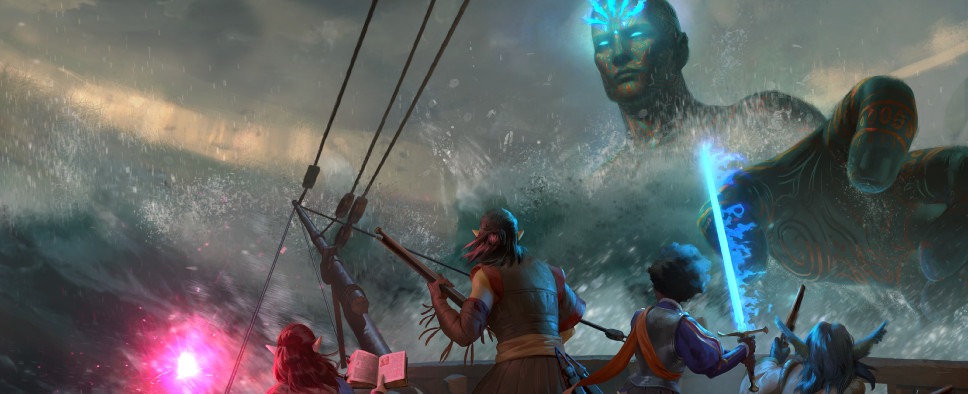Pillars of Eternity II: Deadfire Beginner's Guides
-
Category: News ArchiveHits: 8822

If you've been following the development of Pillars of Eternity II: Deadfire, then you probably know all about that game's world and characters, as well as the ins and outs of the traditional real time with pause CRPG gameplay. If, however, you'd like to learn a bit more about any of the above, the editors over at PCGamesN offer a series of introductory articles sponsored by Obsidian Entertainment. The first one acquaints us with the game's companions and sidekicks. The second one is all about the Deadfire Archipelago and its factions. And the third one deals with some gameplay basics, like building your party, minding your positioning, and using the pause button.
Here's an excerpt from the latter:
Build a complementary party
No - we don’t mean five bffs who skip around telling each other how much they love that new cuirass, or how the bastard sword they’re wiedling sets off the colour of their eyes. To survive the many challenges of Pillars of Eternity II: Deadfire, you need to compose a party of classes that complement each other’s abilities. Wandering around with a group made exclusively of willowy limbed spellcasters is asking for trouble, and the same goes for lumbering warriors who couldn’t even spell ‘magic’, let alone wield it.
Instead, it’s best to balance your classes according to their relative strengths and weaknesses. The precise balance is open to experimentation - and in fact, that’s half the fun - but if you’re coming to the Pillars, and perhaps even isometric RPGs, afresh here’s a basic template: two tanks, a DPS dealer (melee or ranged), a healer, and a utility.
Since the party size has shrunk from six to five since the first Pillars game, party composition can’t be translated exactly between the two, but the principles remain just the same. The two tanks are there to draw all the damage from whoever you’re fighting, because they’ll inevitably have more health and endurance. Fighters, Barbarians, Paladins, Monks, and even Chanters can work well in a tank partnership together, particularly if they’re given bonuses which attract enemy attention towards them and thus away from your weaker party members.
Onto the DPS dealers - the emphasis here is one dealing maximum damage per second rather than absorbing it. Barbarian, Monk, Cipher, Rogue, and Wizard are all suitable for the job, and you might even decide to sacrifice one tank for two of these - splitting them into one melee and one ranged makes it harder for enemies to position themselves properly to nullify them. Behind them is your healer - a Priest or Druid - whose primary job is buffing everyone’s health and keeping them alive. Then there’s your utility - any of the magical classes, such as Wizard, Chanter or Druid - who buffs friendlies and weakens enemies to your other party members’ attack types.
You’ll know you have alighted on a decent composition when on pausing the game you find that each party member’s default action is roughly what you would have wanted - that is, two people soaking up damage, most throwing out attacks, and one or two on buffing duty.

